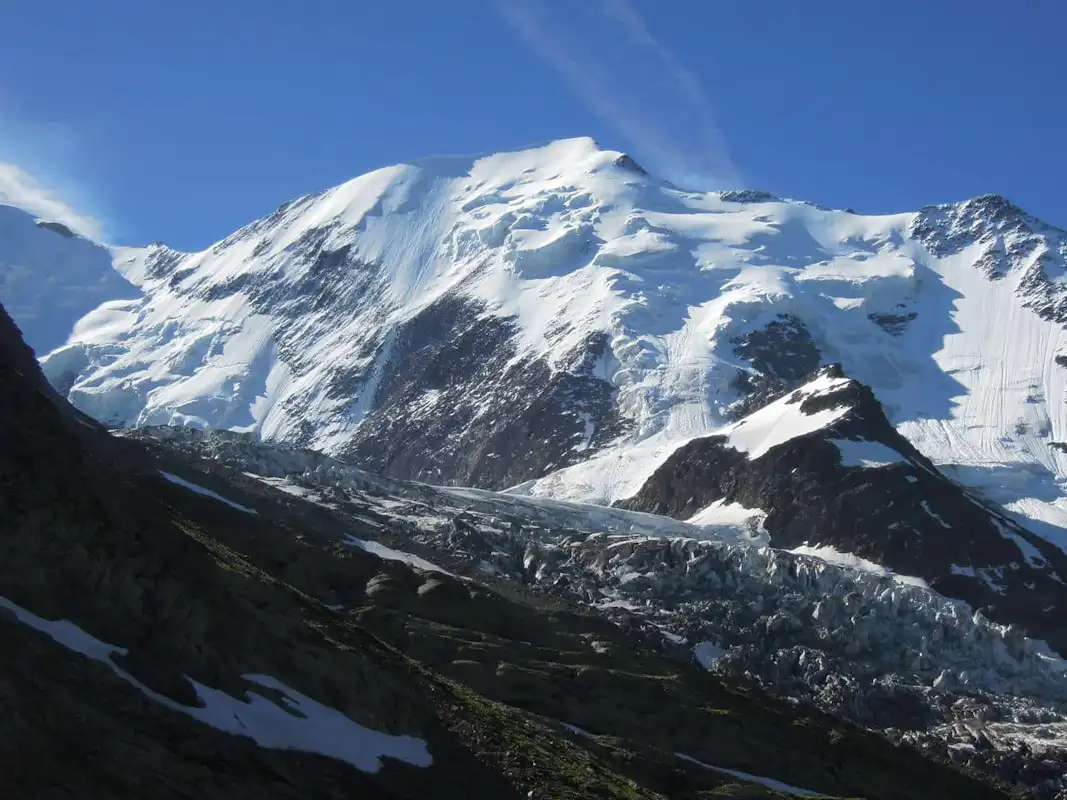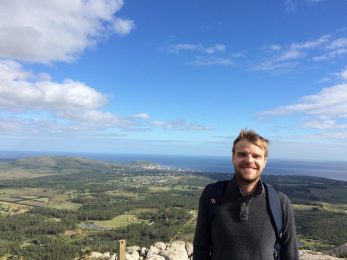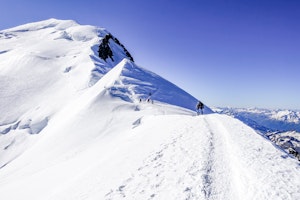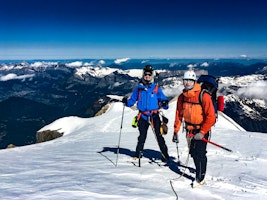Towering over the French and Italian borders, Mont Blanc casts an imposing shadow over its surroundings.
Rising to 4.808 meters in elevation, the tallest peak in the Alps and western Europe has been attracting climbers for well over 150 years. These days, roughly 30.000 people climb the peak each year, with an estimated 200 people per day making it to the top during the summer season.
Planning to climb Mont Blanc? Read our guide with all the necessary information for this classic mountaineering ascent.
Preparing to Climb Mont Blanc
With little technical difficulty involved in the climb, reaching the summit of Mont Blanc is a great challenge for someone in good physical condition and with some previous mountaineering experience.
However, one of the biggest complaints of many mountain guides who offer these trips is that would-be climbers are ill-prepared for the challenge and, sometimes, cannot even make it to the top!
In order to better prepare you for what should be a challenging yet rewarding and completely accomplishable mission to the summit of Mont Blanc, we’ve created a complete guide to all the necessary preparation you should undertake before booking your next mountain climbing trip there.
Physical preparation
Due to its proximity to the luxurious ski resort town of Chamonix and the comprehensive hut system that is in place on the massif, some tend to underestimate how physically exerting the climb is.
While it may not seem like it at first, Mont Blanc is a high altitude peak and requires a day or two of acclimatization prior to summit day. On summit day, you will ascend more than 1.500 vertical meters of elevation in order to get to the top.
It is therefore important to have done the appropriate physical conditioning prior to your ascent.
Professional mountain guides recommend that you do at least 6 months of endurance, strength, and cardiovascular training prior to making your ascent. While hiring a personal trainer is not necessary, many mountain guides recommend this as a fail-safe way to get all the correct muscles in shape.
Having great endurance alone will not guarantee that you can make it to the summit of Mont Blanc. You will need to be able to ascend at least 1.000 meters on consecutive days carrying packs that weigh about 15 kilograms.
Mountain guides recommend that in preparation for this undertaking, you prioritize the following types of exercise as follows:
- Climbing conditioning – this includes carrying 15 kilograms packs on uphill hikes as well as doing stair climbing exercises.
- Strength training – do exercises that strengthen your lower body and core, such as squats and crunches using weights, in the months leading up to your ascent.
- Cardiovascular training – do both aerobic and anaerobic exercises with weights in order to improve your lung capacity and strengthen your heart.
- Flexibility training – stretch before and after each of these types of exercises in order to keep your muscles limber and prevent injury.
Guides generally recommend that you train for about six months prior to your mountaineering expedition, gradually increasing the amount of time, steepness, and weight with which you train. If done properly, this should leave you in excellent physical condition for your mountaineering trip.
Acquaint yourself with the technical skills
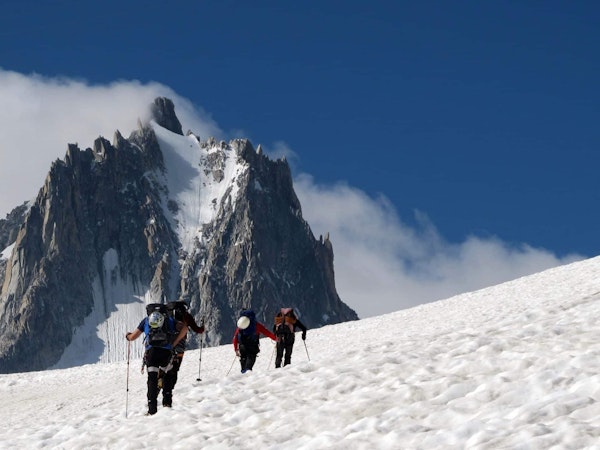
While Mont Blanc is not an overly technical climb, in order to get to the top you will need to be familiar with some rock and ice climbing techniques as well as some snow skills, such as glacier hiking.
The best way to get a bit of experiencing doing this is to make a slightly easier ascent at some point prior to attempting Mont Blanc.
Aiguille du Tour, which is located on the northern end of the Mont Blanc massif on the Swiss-French border, is a popular starter peak for first time and novice mountaineers. It is also the closest, so you could climb one and then the other on the same trip! Don't miss our guide with all the details to climb Aiguille du Tour.
If you like this idea, but want to mountaineer elsewhere in the range first, that’s perfectly fine. The Alps have several other great mountaineering spots for beginners, ranging from the Gran Paradiso in Italy to the Weissmeis in Switzerland!
Keep reading: Mountaineering in the Alps, 5 Summits for Beginners
Another option guides offer is mountaineering courses that culminate with an ascent of Mont Blanc. These may last three days or more.
This six-day Mont Blanc climbing course, for example, is a great option because it allows you time to acclimatize and also gives you the chance of exploring other mountains in the Alps. Furthermore, the guides will teach you roping, crampons, and glacier walking techniques, which will also help build your confidence.
You can also find specific courses to tackle different mountaineering challenges such as this 1-day Crevasse Rescue training, or this 2-day Glacier Progression Course in Chamonix which will give you additional skills that are useful for climbing Mont Blanc.
Bring the proper mountaineering equipment
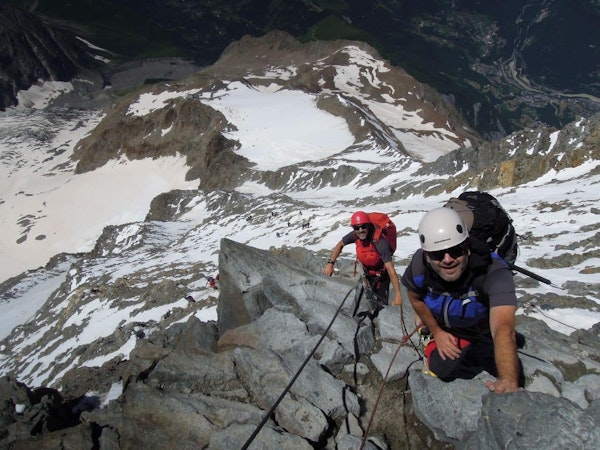
Even after all the preparation in the world, you will not succeed in climbing Mont Blanc – or any other mountain for that matter – without bringing the proper equipment and clothing.
The following are gear items that are either provided by the guide or available for rent in Chamonix or Courmayeur. Either way, make sure you have them prior to your ascent.
- Carabiners
- Crampons
- Harness
- Helmet
- Ice axe
- Rope
Where can I rent technical equipment for Mont Blanc?
In Chamonix, you can rent equipment at Snell Sports and Ravanel & Co. In Courmayeur (Italy), consider 4810 Sport Store.
What you need to do in the run up to your Mont Blanc ascent
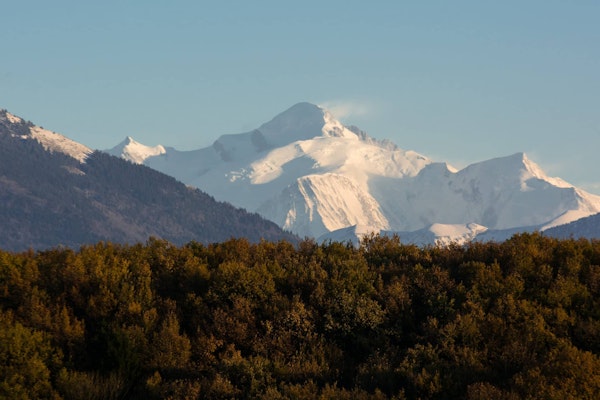
Once all of your training is done, you have practiced the basics of mountaineering and double-checked your pack to ensure you have all the necessary equipment, there are only a few more things left to do in order to ensure a successful ascent.
The first is acclimatization. Make sure you arrive in Chamonix a few days before your ascent in order to get used to the high altitude.
Staying hydrated will help you acclimatize and is another necessary step before a mountaineering expedition. Be sure to drink more than a liter of water each day in the week or so leading up to the expedition.
Finally, make sure that you are well-rested before the expedition. Get enough sleep in the weeks leading up to the trip. Being tired while climbing not only decreases your chances of reaching the summit but is also dangerous for your well-being on the mountain.
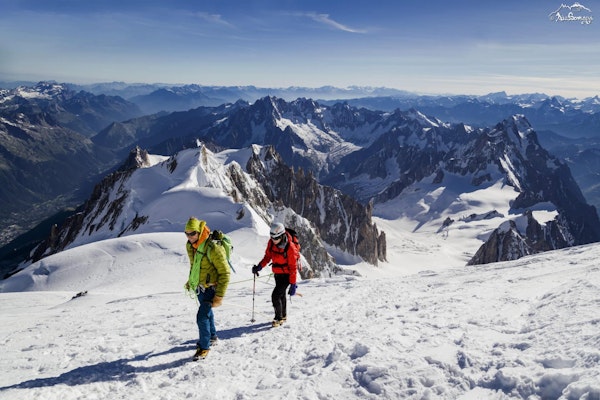
Once all of this is complete, you will have done everything in your power to successfully climb Mont Blanc. Begin planning your next mountaineering expedition to this iconic summit! It’s never too early to start preparing.
